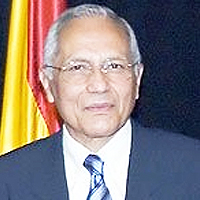Update on the Clinical Applications of Mesenchymal Stem Cells
Published on: 21st December, 2023
Mesenchymal stem cells are heterogenous adult multipotent stromal cells that can be isolated from various sources including bone marrow, peripheral blood, umbilical cord blood, dental pulp, and adipose tissue. They have certain regenerative, anti-inflammatory, immunomodulatory, immunosuppressive, antimicrobial, and other properties that enable them to have several therapeutic and clinical applications including treatment of various autoimmune disorders; role in hematopoietic stem cell transplantation and regenerative medicine; treatment of skin, pulmonary and cardiovascular disorders; treatment of neurological and eye diseases; as well as treatment of various infections and their complications. Different factors including donor age, biological source, route of administration, and signaling pathways have an impact on the functions and consequently the clinical applications of mesenchymal stromal cells. The products of mesenchymal stem cells such as extracellular vesicles and exosomes reproduce the biological effects and most of the therapeutic actions of the parent stem cells. Genetic engineering and the use of specific mesenchymal stromal cell products have improved their clinical efficacy and decreased their adverse effects. However, despite the recent progress in the use of mesenchymal stem cells, the clinical application of these cells in the treatment of several diseases still faces real challenges that need to be resolved. The current status of mesenchymal stem cells and the controversies related to their clinical utilization in various disease conditions will be thoroughly discussed in this review.
Determinants of Rural Women's Participation in Agricultural Cooperatives in Burundi: The Case of the TWITEZIMBERE and REKATUJANE Rice Cooperatives in the GIHANGA Commune
Published on: 13th February, 2024
This article shows the driving factors of rural women's participation in the TWITEZIMBERE and REKATUJANE rice cooperatives in the GIHANGA commune. These factors are related to the preservation of traditional culture in Burundi in general and in rural areas in particular, where women are in the majority. To achieve this, the research methodology used is both qualitative (individual interviews and documentary research) and quantitative (questionnaire administered to respondents). The results of this research show that traditional culture has forced rural women to stay at home to care for children and perform various household chores. This situation of isolation leads to a lack of information about the benefits of rice-growing cooperatives and the value they can bring to their members. It is also observed that rural women lack the will to adopt the new rice farming practices in Cooperatives. This situation of lack of will to adopt new behavior has hindered the massive participation of rural women in rice cooperatives. Finally, the article emphasizes that the illiteracy of these rural women and the lack of external technical and financial support are considered other important factors that constituted the barriers to their massive participation in rice cooperatives. To deal with this series of problems, the researcher has discovered strategies that can encourage rural women to participate massively in rice cooperatives, in particular, to become members of rice cooperatives that help their members to make them known and receive external technical and financial support, for example, incentives from the government. For this, the Government must therefore help them by providing multifaceted support including local and foreign technical and financial partners. Similarly, cooperative leaders might seek out various donors for their agricultural cooperative associations.
Pure Red Cell Aplasia - Post Major ABO Incompatible Allogenic Stem Cell Transplantation Role of Ibrutinib
Published on: 24th July, 2024
Pure Red Cell Aplasia (PRCA) is a well-recognized complication of Major ABO-incompatible allogeneic stem cell transplantation. It is featured by anemia, Reticulocytopenia, and the absence of erythroblasts in a normal-appearing bone marrow biopsy. The mechanism for PRCA is presumed to be the persistence of recipient isoagglutinins, produced by residual host B lymphocytes or plasma cells, which probably interfere with the engraftment of donor erythroid cells. Several risk factors for PRCA have been reported, such as the presence of Anti-A Isoagglutininsbefore transplantation, reduced intensity conditioning, absence of Graft Versus Host Disease (GVHD), sibling donor and Cyclosporin A(CsA) as GVHD prophylaxis. PRCA is not a barrier to going ahead with Hematopoietic Stem Cell Transplantation (HSCT). There are many therapeutic options however few recover spontaneously, among the available options include high-dose steroids, Erythropoietin(EPO), Plasma exchange, Donor lymphocyte Infusion (DLI), treatment with Rituximab, Bortezomib, Daratumumab and tapering or discontinuation of immunosuppression. All these options have variable success in the literature ranging from 30% - 70%, Non-responders become red cell transfusion dependent and their quality of life is impaired. We are reporting a novel therapeutic option, Ibrutinib as an armamentarium in treating the PRCA post-HSCT, which works by blocking the Bruton Tyrosine Kinase (BTK) pathway thereby inhibiting the host B cell isoagglutinins production and good clinical response.
Mesenchymal Stem Cell Therapy for Hepatic Encephalopathy Due to Advance Liver Cirrhosis: Case Study
Published on: 25th July, 2024
Mesenchymal stem cell (MSC) transplantation may be an alternative to liver transplantation for patients with end-stage liver disease. A 24-year-old patient with Hepatic Encephalopathy due to alcoholic liver cirrhosis underwent UCMSC transplantation because there were no donors available for liver transplants involving adult deceased and living individuals. The patient was given allogeneic Umbilical cord-derived MSCs, which were then cultured following accepted practices. Subsequently, the UCMSCs were infused through the intravenous route 3 times at the interval of 30 days. Serum bilirubin, globulin, and ammonia levels were improved after the infusion and the morphology of the liver and spleen had also improved.
Seminal Extracellular Traps in SARS-CoV-2 Infection
Published on: 19th August, 2024
Introduction: Extracellular Traps (ETs) are fibers composed of chromatin and cytoplasmic proteins, which can trap and kill pathogens by the phenomenon called ETosis. They are released by neutrophils, macrophages, and monocytes, and can be found in semen. The aim of this presentation is to evidence of the indirect effect of SARS-CoV-2 in semen by ETs.Patients and methods: Experimental design: retrospective descriptive observational study.Semen samples from two groups were studied following WHO guidelines: 1) SARS-CoV-2 infected donors (n: 5; at 7, 15, 30, 60, and 90 days after PCR diagnosis); 2) COVID-19 positive patients assisted in our laboratory between 2021 and 2022 (n: 70). They were observed in fresh and in Papanicolaou-stained smears by CASA and light microscopy; the presence of macrophages, spermiophages, ETs and hyperviscosity were recorded while neutrophilic concentration was calculated. Two control groups were designed: a) Patients belonging to group 2, studied before de pandemia (n: 13); b) Culture-negative semen samples (n: 28).Results: In the first group, ETs were observed in all the samples, while only 18% had leucospermia. Macrophages, spermiophages, and hyperviscosity were recorded in 68%, 27%, and 36% of the studied cases respectively.In the second group, ETs were present 100% in the acute phase (< 90 days after diagnosis) and decreased to 71% in the later stage (90 to 270 days). The trapped sperm were non-progressive motile or immotile alive or dead.No traps were found in either control group.Conclusion: In our study ETs were the most sensitive seminal marker of SARS-CoV-2 infection.
Haematopoietic Cell Transplants in Adults Acute Lymphoblastic Leukaemia in a Resource-poor Middle East Country
Published on: 8th January, 2025
Background: Outcomes of chemotherapy in adults with ALL in resource-poor countries are reportedly worse compared with outcomes in resource-rich countries. There are few comparative data on transplants in these settings.Methods: Retrospective analysis of 102 consecutive subjects > 18 years with ALL receiving an allotransplant from Jan 2007 to Sept 2022 in Jordan.Results: Median follow-up is 38 mo ([IQR] 16-80 mo). 81 subjects were men. The median age was 29 y(IQR 22-36 y). 63 were B-cell and 38, were T-cell lineage. 31 had the Ph-chromosome. 68 were in 1st and 34, ≥ 2nd histological complete remission. 97 received intensive conditioning. Donors were an HLA-identical sibling (N = 88) or an HLA-mis-matched relative (N = 14). Grafts were blood cells. Subjects received conventional GvHD prophylaxis, cyclophosphamide (N = 11) or ATG (N = 3). All subjects recovered bone marrow function with complete donor chimerism. 5-year leukemia-free survival (LFS), 58% (47, 69%) and survival, 45% (34, 56%). 45 subjects developed acute and 44, cGvHD. 3-year cumulative incidence of cGvHD was 28% (15, 42%). 5-year CIR was 32% (18, 45%) and 3-year NRM, 25% (15, 35%).Conclusion: Allotransplant outcomes in adults with ALL in Jordan, a resource-poor country, seem comparable to those reported in resource-rich countries.
Detrimental Effects of Methylenetetrahydrofolate Reductase (MTHFR) Gene Polymorphism on Human Reproductive Health: A Review
Published on: 5th March, 2025
Methylenetetrahydrofolate Reductase (MTHFR) is an important enzyme of the folate cycle, which is required to convert 5,10-methyltetrahydrofolate into 5-methyltetrahydrofolate (5-methylTHHF). 5-methyl THF is a methyl group donor for several cellular methylation processes. It also donates methyl group for the conversion of homocysteine into methionine, the higher concentration of which is toxic. MTHFR gene C677T polymorphism is clinically important polymorphism and the variant MTHFR (A222V) enzyme has reduced activity, hence increasing the requirement for folic acid. Less conversion of folate to 5-methyl-THF due to C677T polymorphism results in a higher plasma concentration of homocysteine (hyperhomocysteinemia). Individuals having C677T polymorphism are susceptible to various diseases, including reproductive problems like male infertility, polycystic ovary syndrome, Recurrent Pregnancy Loss (RPL), Preeclampsia (PE), placental abruption, and adverse pregnancy outcomes. MTHFR C677T polymorphism mimics folate deficiency, and folate is required for DNA synthesis, repair, methylation, and proper chromosome segregation, and all these processes are important for foetal growth and normal development. Methylation and demethylation processes control the gene expression of about 45% of human genes. Impaired methylation influences the expression of genes involved in the regulation of hormones, spermatogenesis, and oogenesis. In males, oxidative stress damages sperm DNA decreases sperm motility, and may impair fertilization capability. In pregnant women, hyperhomocysteinemia increases oxidative stress and inflammation within the placenta, which causes damage to placental tissue, impairs its function, and disrupts foetal development. Further, hyperhomocysteinemia (HHcy) is embryotoxic and neurotoxic and is responsible for congenital anomalies in the foetus. This review supports the idea that MTHFR C677T polymorphism is associated with an increased risk for male infertility, PCOS, RPL, PE, and congenital anomalies. This review may provide a clue toward a better understanding of the correlation between the MTHFR C677T polymorphism and its detrimental effects on human reproductive health.
















